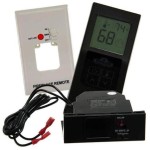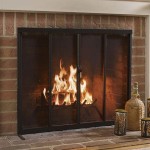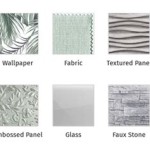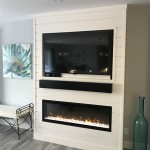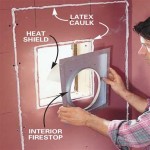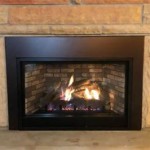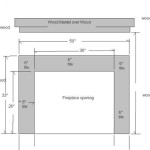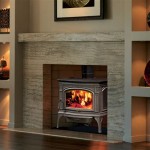Fireplace and Chimney Repairs: Ensuring Safety and Efficiency
Fireplaces and chimneys are integral components of many homes, providing warmth, ambiance, and aesthetic appeal. However, consistent use and exposure to external elements can lead to deterioration over time. Regular maintenance and timely repairs are crucial to ensuring the safe and efficient operation of these structures. Neglecting necessary repairs can result in hazards such as chimney fires, carbon monoxide leaks, and structural damage to the home. This article will explore common fireplace and chimney problems, the importance of professional inspections, and the various repair services available.
Understanding the Importance of Regular Inspections
Scheduled inspections are the cornerstone of preventative maintenance for fireplaces and chimneys. These inspections, typically conducted by certified chimney sweeps or technicians, involve a thorough examination of the entire system, from the firebox to the chimney cap. A comprehensive inspection can identify existing problems and potential areas of concern before they escalate into major issues. The frequency of inspections depends on the usage of the fireplace, but annual inspections are generally recommended, even for fireplaces that are used infrequently.
During an inspection, technicians will look for signs of creosote buildup, which is a highly combustible byproduct of burning wood. Excessive creosote accumulation is a primary cause of chimney fires. Inspectors also assess the structural integrity of the chimney, checking for cracks, spalling, or other forms of deterioration in the brickwork or masonry. They will also examine the flue liner, which protects the chimney from corrosive gases and helps to ensure proper draft. Any damage to the flue liner can compromise the chimney's ability to vent smoke and gases safely.
Furthermore, a professional inspection includes checking the condition of the chimney cap, which prevents rain, snow, and debris from entering the chimney. A damaged or missing chimney cap can lead to water damage within the chimney structure and can also allow animals to nest inside. The damper, which controls airflow into the chimney, is also examined for proper function. A malfunctioning damper can lead to energy loss when the fireplace is not in use and can also affect the draft when the fireplace is in operation.
Common Fireplace and Chimney Problems and Repair Solutions
Fireplaces and chimneys are susceptible to a range of problems, each requiring specific repair solutions. One of the most common issues is creosote buildup, as previously mentioned. Depending on the severity of the accumulation, creosote can be removed through various methods, including sweeping with specialized brushes and chains. In severe cases, chemical treatments may be necessary to loosen and remove hardened creosote deposits.
Another frequent problem is damage to the masonry or brickwork of the chimney. Cracks in the brick or mortar can allow water to penetrate the chimney structure, leading to further deterioration and potentially causing the chimney to lean or collapse. Repairs for masonry damage can range from tuckpointing, which involves replacing damaged mortar, to complete chimney rebuilding in cases of extensive deterioration. Waterproofing the chimney can also help to prevent future water damage.
Flue liner damage is another serious concern. If the flue liner is cracked, broken, or deteriorated, it must be repaired or replaced. Options for flue liner repair include installing a new stainless steel liner, which provides a durable and long-lasting solution. In some cases, a ceramic or clay liner can be used, but these materials are generally less durable than stainless steel. Alternatively, chimney relining can be done through a process called "casting," which involves pouring a specialized cement mixture into the existing flue to create a new, smooth lining.
Water damage can manifest itself in various ways, including staining on the walls or ceiling near the fireplace, efflorescence (a white, powdery deposit) on the brickwork, and musty odors. Addressing water damage requires identifying the source of the leak and implementing appropriate repairs. This may involve repairing or replacing the chimney cap, sealing cracks in the masonry, or installing a chimney crown, which is a concrete slab that covers the top of the chimney and prevents water from entering.
Damper problems can also affect the efficiency and safety of the fireplace. A rusted or warped damper may not seal properly, leading to heat loss and drafts. Damper repairs may involve cleaning and lubricating the damper mechanism, replacing damaged parts, or installing a new damper unit. Top-sealing dampers, which are installed at the top of the chimney, are an energy-efficient option that can provide a tighter seal than traditional throat dampers.
Selecting a Qualified Repair Professional
Choosing a qualified professional for fireplace and chimney repairs is paramount to ensuring the work is done safely and effectively. Look for technicians who are certified by organizations such as the Chimney Safety Institute of America (CSIA) or the National Fireplace Institute (NFI). Certification demonstrates that the technician has undergone specialized training and has passed examinations to demonstrate their knowledge and skills.
In addition to certification, it is important to check the contractor's licensing and insurance. A licensed contractor is required to meet certain standards and regulations, and insurance provides protection in case of accidents or damages during the repair process. Request references from previous clients and check online reviews to gauge the contractor's reputation and quality of work.
Obtaining multiple quotes from different contractors is also advisable. This allows for comparing prices and services, and can help to ensure that you are getting a fair and competitive price. When reviewing quotes, pay attention to the details of the proposed work, the materials to be used, and the estimated completion time. Be wary of contractors who offer unusually low prices, as this may indicate substandard work or the use of inferior materials.
Finally, be sure to ask the contractor about their experience with similar types of repairs. A contractor with extensive experience in fireplace and chimney repairs is more likely to be familiar with the specific challenges and solutions associated with different types of problems.

The Definitive Guide To Chimney Inspection And Repairs Chimcare

Chimney Repair Service Seattle Wa Cap

Chimney And Fireplace Repair Flue Tech Inc

Chimney Repairs Brickliners

What Makes Up A Fireplace Chimney Dc Area Repair Service

Fireplace Repair Seattle Wa Bricksmith Masonry

Custom Masonry Chimney Repair Fireplace Services Lucky Sully Sweep

Chimney Repair Reconstruction Mad Hatter Services

Chimney Repair West Seattle Sweep

Elk Grove Village Fireplace Repair Inspection And Chimney Authority
Related Posts

